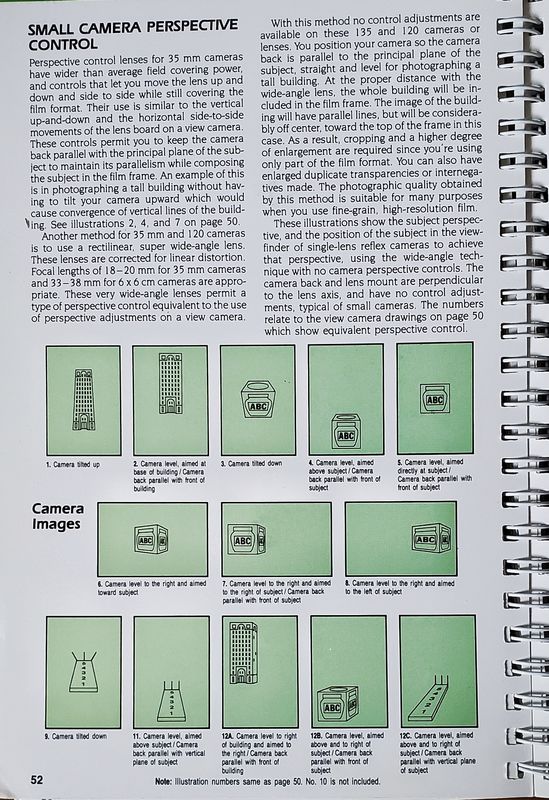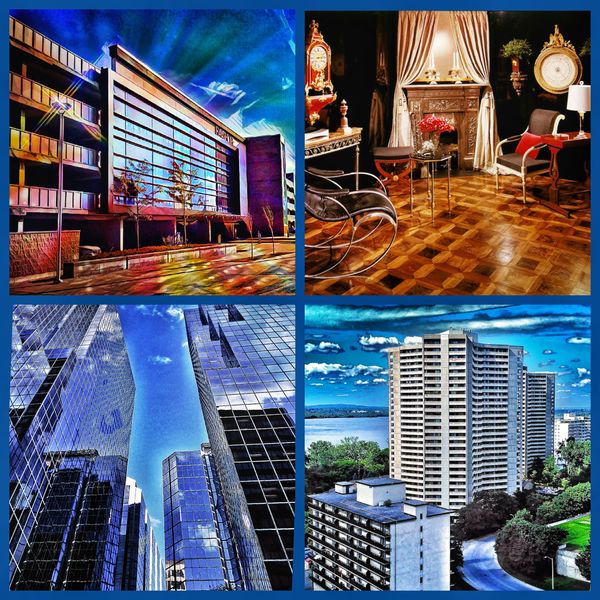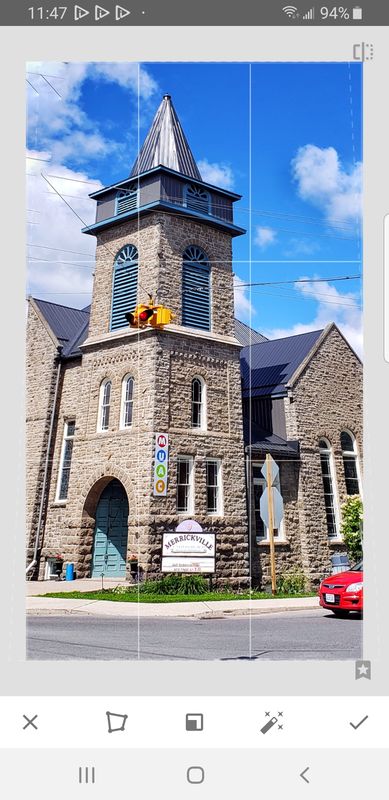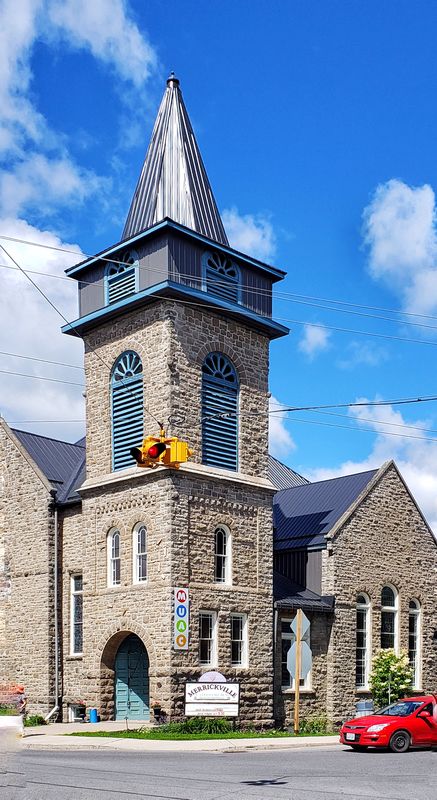Keystone effect
Jul 5, 2019 09:48:36 #
I have never learned to use Photoshop and I am getting along pretty well with the editing tools in Windows 10. However, keystoning is a problem I haven't been able to solve. Once years ago I had a simple "fix" that worked most of the time, but I didn't form a habit of using it and now I have no idea what it was. Does anyone recall such a thing? It was some combination of Shift or Control and a number or letter, I think. Any ideas without learning Photoshop??
Jul 5, 2019 09:50:44 #
Jul 5, 2019 09:58:22 #
There are open source and free programs that would do it, GIMP for example, just a Google away under perspective image correction or similar. I don't know how to do it without a learning curve though.
Jul 5, 2019 09:59:19 #
will47 wrote:
What is the Keystone effect?
The keystone effect is when vertical lines (or horizontals for that matter) converge. For instance, when you shoot a building and your camera is not exactly parallel with the building, the sides of the building will not be parallel. This is fine if you want it, but if you don't, it looks like a mistake. Several programs, like Corel Paint Shot Pro have the means to correct it. Real estate photographers use it to adjust for such distortions all the time.
Jul 5, 2019 10:04:49 #
Burtzy wrote:
The keystone effect is when vertical lines (or horizontals for that matter) converge. For instance, when you shoot a building and your camera is not exactly parallel with the building, the sides of the building will not be parallel. This is fine if you want it, but if you don't, it looks like a mistake. Several programs, like Corel Paint Shot Pro have the means to correct it. Real estate photographers use it to adjust for such distortions all the time.
Ah, parallax.
(Is there an option for parallax correction instead of "keystone correction"?
Jul 5, 2019 10:15:30 #
You could shoot straight on with the sensor parallel to the face of the building, and skip the correction.
Jul 5, 2019 10:17:08 #
Jul 5, 2019 10:20:53 #
bleirer wrote:
You could shoot straight on with the sensor parallel to the face of the building, and skip the correction.
Maybe....
If he's not too close for the focal length used.
Or shoot WIDE, level the camera, crop out the bottom.
Jul 5, 2019 10:52:36 #
bleirer wrote:
You could shoot straight on with the sensor parallel to the face of the building, and skip the correction.
Rather difficult to do when photographing multi story buildings.
Jul 5, 2019 10:53:39 #
Longshadow wrote:
Ah, parallax.
(Is there an option for parallax correction instead of "keystone correction"?
(Is there an option for parallax correction instead of "keystone correction"?
This is not a parallax issue. This is keystoning. Parallax is the difference between what the finder sees and what the camera sees due to the relative differences of position of the lens and finder. The only sure correction for parallax issues is to widen the view a bit and adjust the cropping to how you want to view the finished image.
Jul 5, 2019 11:13:39 #
mwsilvers
Loc: Central New Jersey
Ringer wrote:
I have never learned to use Photoshop and I am getting along pretty well with the editing tools in Windows 10. However, keystoning is a problem I haven't been able to solve. Once years ago I had a simple "fix" that worked most of the time, but I didn't form a habit of using it and now I have no idea what it was. Does anyone recall such a thing? It was some combination of Shift or Control and a number or letter, I think. Any ideas without learning Photoshop??
I'm not sure what you think you used in the past, but there are no native tools in Windows which will allow you to correct for converging vertical lines, and never have been. You will need some form of third party post processing software for that.
Jul 5, 2019 13:05:03 #
The best way to address KEYSTONE distortion is while shooting. This is a common problem in photographing tall architectural structures from the ground. It is especially notable when buildings seem misshapen, look that they are lean over, crooked or falling over or when parallel vertical or horizontal lines seem to converge at an unnatural perspective. Basically, a rectangular shaped structure takes on a trapezoidal appearance in the photograph. This effect is especially present when photographing structures at fairly close distances with a wide angle lens or short focal length setting on a zoom lens.
In commercial/architectural photography the traditional way of correcting this in the camera was the use of a view camera with an adjustable front standard or a medium format or digital camera with a tilt/shift perspective control lens. This enables to keeping the film or sensor plane parallel to the subject and moving the lens, usually upward or downward to accommodate the height of the structure. If you do quite a bit of this kind of work, it pays to invest in this kind of equipment. This would require the use of a tripod and of course, it somewhat time-consuming in setting up each shot.
For more casual shooting as a hobbyist, enthusiast or tourist when shooting quickly and handheld, the best approach is to use one of a few different strategies- all having to do with camera position, placement in relation to the subject.
You can simply keep the camera (sensor) parallel to the subject structure (no tilting of the camer upward or downward) which may result in too much ground or sky in your composition- this unneeded space can be cropped out in post-processing. Of course, you are gonna need the distance. If possible, you can try to use a normal or moderately wide focal length. Attached, is a page out of an old Kodak Professional Photoguide that explains some f this theory in detail along with diagrams. This applied to 35mm cameras when view cameras or P/C lenses are not used- it applies to current digital equipment.
Another method that I use is to find higher ground or access that will enable me to shoot from about halfway up the subject structure. Sometimes a hill or natural elevation will do the job. I have shot from rooftops or windows of nearby buildings. On commercial jobs, I have used a cherry picker, other elevation device or a simple stepladder. This method makes for fast easy handheld shooting, exact composition without fussing with view camera or P/C adjustments.
Sometimes, no matter what you do or where condition are especially difficult, some post-processing correction will be required. Most of the popular software such as Lightroom and PhotoShop have some perspective control adjustments. Since I address most of my perspective control in shooting, I use a simple app that I can access on my tablet and make the adjust right on site so I know I have everything under control before I leave the location. See a screenshot of the app- there are two simple arrows to indicate the direction of correction and the rest is totally visual- line up the vertical lines with the grid lines on the screen. As with any perspective control or image rotation in post-processing, you will lose a few pixels. You will also lose a few in cropping out excessive ground and sky but nothing too seriously impair the image quality if out have a good composition where the main subject is dominant in the image space.
I do quite a volume of exterior and interior work for advertising clients. The same principles apply to interior work. Sometimes I have to work quickly in homes or hotel rooms that are still occupied by the residents so I can't get into complex setups. In an average room with an 8-foot ceiling, I place cameras at 4 feet and crop afterward. In one of the shots posted here, I had to use a view camera because the shot was made for the flooring company and a low angle was needed to emphasize the floor and force more depth of field.
Sometimes when shooting from high places aircraft, you can get a different kinda keystoning. When you shoot downwards, especially with a wide angle focal lengths, you get foreshortening. This makes structures seem large at the top and tapered toward the bottom- so you apply some of the aforementioned methods in reverse. Wh shoot full-length portraits, make sure the camera is at the subject's waste level otherwise they will appear shorter than they are.
Oh- Sometimes Keystone is a good thing. It gives dynamic lines to tall modern structures. Theses are not architecturally correct but they make for nice advertising shots and annual report covers. I hope this helps!
In commercial/architectural photography the traditional way of correcting this in the camera was the use of a view camera with an adjustable front standard or a medium format or digital camera with a tilt/shift perspective control lens. This enables to keeping the film or sensor plane parallel to the subject and moving the lens, usually upward or downward to accommodate the height of the structure. If you do quite a bit of this kind of work, it pays to invest in this kind of equipment. This would require the use of a tripod and of course, it somewhat time-consuming in setting up each shot.
For more casual shooting as a hobbyist, enthusiast or tourist when shooting quickly and handheld, the best approach is to use one of a few different strategies- all having to do with camera position, placement in relation to the subject.
You can simply keep the camera (sensor) parallel to the subject structure (no tilting of the camer upward or downward) which may result in too much ground or sky in your composition- this unneeded space can be cropped out in post-processing. Of course, you are gonna need the distance. If possible, you can try to use a normal or moderately wide focal length. Attached, is a page out of an old Kodak Professional Photoguide that explains some f this theory in detail along with diagrams. This applied to 35mm cameras when view cameras or P/C lenses are not used- it applies to current digital equipment.
Another method that I use is to find higher ground or access that will enable me to shoot from about halfway up the subject structure. Sometimes a hill or natural elevation will do the job. I have shot from rooftops or windows of nearby buildings. On commercial jobs, I have used a cherry picker, other elevation device or a simple stepladder. This method makes for fast easy handheld shooting, exact composition without fussing with view camera or P/C adjustments.
Sometimes, no matter what you do or where condition are especially difficult, some post-processing correction will be required. Most of the popular software such as Lightroom and PhotoShop have some perspective control adjustments. Since I address most of my perspective control in shooting, I use a simple app that I can access on my tablet and make the adjust right on site so I know I have everything under control before I leave the location. See a screenshot of the app- there are two simple arrows to indicate the direction of correction and the rest is totally visual- line up the vertical lines with the grid lines on the screen. As with any perspective control or image rotation in post-processing, you will lose a few pixels. You will also lose a few in cropping out excessive ground and sky but nothing too seriously impair the image quality if out have a good composition where the main subject is dominant in the image space.
I do quite a volume of exterior and interior work for advertising clients. The same principles apply to interior work. Sometimes I have to work quickly in homes or hotel rooms that are still occupied by the residents so I can't get into complex setups. In an average room with an 8-foot ceiling, I place cameras at 4 feet and crop afterward. In one of the shots posted here, I had to use a view camera because the shot was made for the flooring company and a low angle was needed to emphasize the floor and force more depth of field.
Sometimes when shooting from high places aircraft, you can get a different kinda keystoning. When you shoot downwards, especially with a wide angle focal lengths, you get foreshortening. This makes structures seem large at the top and tapered toward the bottom- so you apply some of the aforementioned methods in reverse. Wh shoot full-length portraits, make sure the camera is at the subject's waste level otherwise they will appear shorter than they are.
Oh- Sometimes Keystone is a good thing. It gives dynamic lines to tall modern structures. Theses are not architecturally correct but they make for nice advertising shots and annual report covers. I hope this helps!






Jul 5, 2019 13:28:58 #
Jul 5, 2019 13:58:00 #
Burtzy wrote:
This is not a parallax issue. This is keystoning. Parallax is the difference between what the finder sees and what the camera sees due to the relative differences of position of the lens and finder. The only sure correction for parallax issues is to widen the view a bit and adjust the cropping to how you want to view the finished image.
One description...
Jul 5, 2019 14:04:52 #
Burtzy wrote:
This is not a parallax issue. This is keystoning. Parallax is the difference between what the finder sees and what the camera sees due to the relative differences of position of the lens and finder. The only sure correction for parallax issues is to widen the view a bit and adjust the cropping to how you want to view the finished image.
Defs:
1. the apparent displacement of an observed object due to a change in the position of the observer.
3. the difference between the view of an object as seen through the picture-taking lens of a camera and the view as seen through a separate viewfinder.
Obviously you are referring to #3.
I used #1. the building is displaced, or angled back.
And I found this:
The keystone effect is the apparent distortion of an image caused by projecting it onto an angled surface. It is the distortion of the image dimensions, such as making a square look like a trapezoid, the shape of an architectural keystone, hence the name of the feature.
In photography, the term is used to describe the apparent leaning of buildings towards the vertical centerline of the photo when shooting upwards,...
Parallax≈Keystone Effect.
But, lets not quibble over semantics, eh?.
If you want to reply, then register here. Registration is free and your account is created instantly, so you can post right away.




